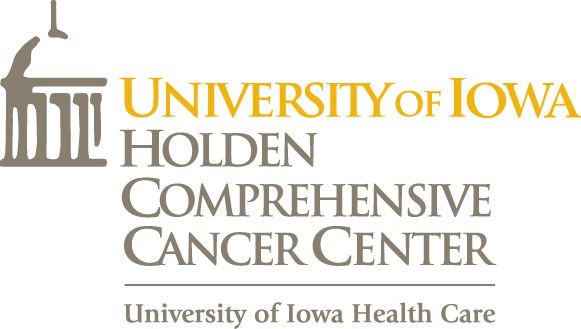
Durvalumab Plus Guadecitabine Shows Early Activity in Checkpoint Inhibitor–Naïve ccRCC

The overall response rate with durvalumab and guadecitabine was 23% in patients with advanced ccRCC who had received 1 or fewer therapies.
Combined treatment with durvalumab (Imfinzi) and guadecitabine (SGI-110) led to early signs of clinical activity among patients with advanced clear cell renal cell carcinoma (ccRCC), according to results from a phase 1b/2 trial (NCT03308396). The findings were presented during the 2023 Genitourinary Cancers Symposium and suggest that checkpoint inhibitor-naïve patients may benefit most from treatment.1
Of the patients who had received 1 or fewer prior therapies for advanced ccRCC (cohort 1; n = 36), treatment with the combination resulted in an overall response rate (ORR) of 23% (n = 8), including a complete response (CR) in 2.7% (n = 1) of patients and a partial response (PR) in 20% (n = 7) of patients. Additionally, 44% (n = 16) of these patients achieved a best response of stable disease (SD) lasting more than 6 months. These CR, PR, and SD rates translated to a disease control rate of 67% in this cohort. Of the patients treated with the combination who had received 2 or fewer prior therapies (cohort 2; n = 15), the ORR was 7% (n = 1), with that 1 patient achieving a PR. In addition, 60% (n = 9) of patients in this cohort achieved a best response of SD.
Previously, the authors reported initial safety findings from the phase 1b dose de-escalation part of this trial, where 6 patients received intravenous (IV) durvalumab at 1500 mg on day 8 of each 28-day cycle plus guadecitabine at either 60 mg/m2 or 45 mg/m2 on days 1 through 5 of each 28-day cycle. Notably, guadecitabine at 60 mg/m2 was associated with 1 dose-limiting toxicity: grade 3 neutropenia. Based on these findings, the investigators confirmed the safety of guadecitabine at 45 mg/m2 on days 1 through 5 plus IV durvalumab at 1500 mg on day 8 and deemed this the recommended phase 2 dose.2
“We hypothesized that the combination of guadecitabine plus durvalumab would increase T lymphocyte infiltration and result in antitumor activity,” lead study author Yousef Zakharia, MD, of the University of Iowa Holden Comprehensive Cancer Center, in Iowa City, and colleagues, wrote in a poster of the data.
To be eligible for enrollment on this single-arm, multi-site trial, patients needed to have histologically confirmed renal cell carcinoma (RCC) with a pure or mixed clear cell component, histologic or radiologic evidence of metastatic disease, and an ECOG performance status (PS) of 0 or 1.1 In cohort 1, patients could have received up to 1 prior therapy for advanced ccRCC, although prior PD-1/PD-L1/CTLA-4 inhibitors were not permitted. In cohort 2, patients could have received up to 2 prior therapies for advanced ccRCC and were required to have received and not responded to a PD-1/PD-L1 inhibitor.
Upon initiating study treatment, patients received a computed tomography scan every 2 cycles for 8 weeks. Patients could remain on study treatment until confirmed disease progression, unacceptable toxicity, or withdrawal of consent. Patients were permitted to continue durvalumab treatment after 1 confirmed progression if they discussed this decision with the sponsor investigator and reconsented to this treatment. Survival follow-up evaluations took place every 3 months for 2 years after each patient’s trial registration date.
The primary end point of this trial was investigator-assessed ORR in cohort 1. Key secondary end points included ORR in cohort 2, progression-free survival (PFS), and overall survival (OS).
In cohort 1, the median age was 68 years (range, 40-85), 69% (n = 25) of patients were male, 92% (n = 33) of patients were White, and 97% (n = 35) of patients were non-Hispanic. In total, 94% (n = 34) and 6% (n = 2) pf patients in cohort 1 had intermediate- and poor-risk disease, respectively, per International Metastatic RCC Database Consortium criteria. Additionally, 81% (n = 29) and 19% (n = 7) of patients in cohort 1 had pure and mixed ccRCC, respectively.
Furthermore, of the patients in cohort 1, 17% (n = 6) had sarcomatoid histology, 64% (n = 23) of patients did not have sarcomatoid histology, and in 19% (n = 7) histology could not be assessed. In addition, 56% (n = 20) and 44% (n = 16) of patients in cohort 1 had an ECOG PS of 0 and 1, respectively, and 42% (n = 15) had received prior therapy.
In cohort 2, the median age was 65 years (range, 46-93), 73% (n = 11) of patients were male, 100% (n = 15) of patients were White, and 93% (n = 14) of patients were non-Hispanic. In total, 87% (n = 13) and 13% (n = 2) of patients in cohort 1 had intermediate- and poor-risk disease, respectively, per International Metastatic RCC Database Consortium criteria. Additionally, 67% (n = 10) and 33% (n = 5) of patients in cohort 1 had pure and mixed ccRCC, respectively.
Furthermore, of the patients in cohort 1, 27% (n = 4) had sarcomatoid histology and 60% (n = 9) did not have sarcomatoid histology; histology could not be assessed in 13% (n = 2) of patients. In addition, 40% (n = 6) and 60% (n = 9) of patients in cohort 1 had an ECOG PS of 0 and 1, respectively. All patients in this cohort had received prior therapy.
The median PFS was 18.4 months in cohort 1 and 3.9 months in cohort 2. The median OS was not reached.
A biomarker analysis using flow cytometry on peripheral blood that was collected prior to treatment showed that the presence of myeloid-derived suppressor cells was inversely associated with response. Additionally, the patients who responded to durvalumab/guadecitabine treatment had the highest expression of interferon-gamma in their CD8-positive T cells. Across lymphocyte subtypes, responders also had higher expression of tumor necrosis factor alpha than non-responders.
“Promising efficacy, mainly PFS in checkpoint inhibitor–naïve patients, is worth further investigation,” the study authors concluded.
Editor’s Note: Dr Zakharia reports consulting or advisory roles with Amgen, Bayer, Bristol-Myers Squibb/Medarex, Cardinal Health, Castle Biosciences, Clovis Oncology, Eisai, EMD Serono, Exelixis, Janssen, Myovant Sciences, Novartis, Pfizer, Roche/Genentech, Seagen, and TTC Oncology; research funding from Eisai (Inst), Exelixis (Inst), and Pfizer (Inst); and travel, accommodations, and expenses from Newlink Genetics.
References
- Zakharia Y, Singer EA, Acharyya S, et al. Final results of a phase Ib/II study of durvalumab and guadecitabine in advanced clear cell renal cell carcinoma (ccRCC) and biomarker analysis. J Clin Oncol. 2023;41(suppl 6):696. doi:10.1200/JCO.2023.41.6_suppl.696
- Zakharia Y, Sun Y, Garje R, et al. Phase Ib/II study of durvalumab plus guadecitabine in advanced clear cell renal cell cancer (ccRCC). Ann Oncol. 2020;31(suppl 4):S594-S595. doi:10.1016/j.annonc.2020.08.844
Newsletter
Knowledge is power. Don’t miss the most recent breakthroughs in cancer care.




















































































